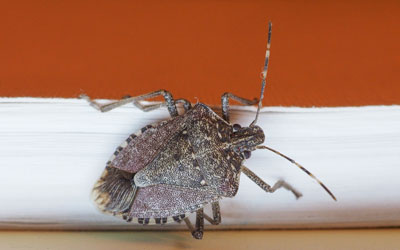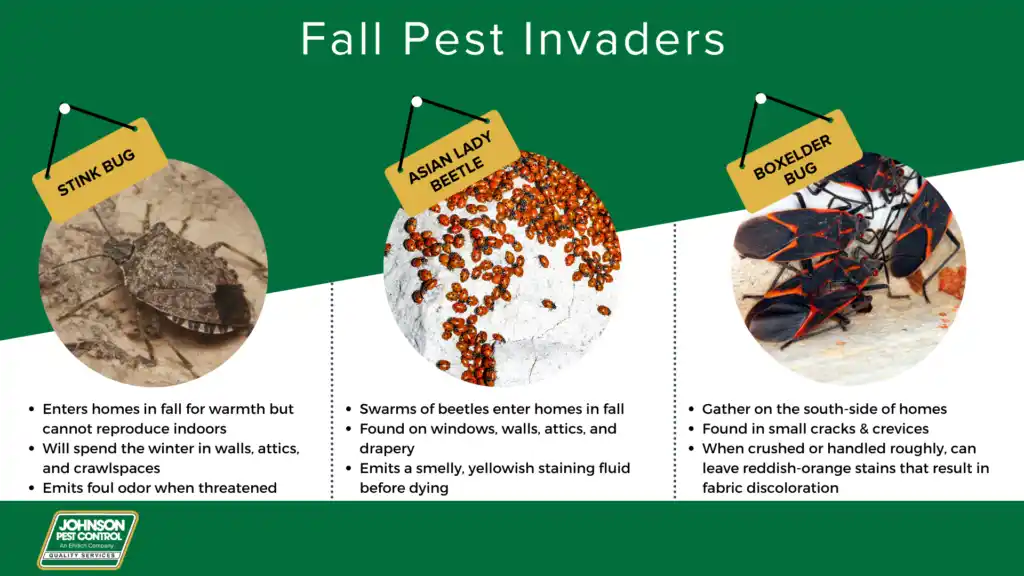 Do you notice the same bugs congregating on the side of your Sevierville area home every fall season? You may have a boxelder bug or stink bug problem! Both of these insects are known for a couple of things. One, the foul odor they release when crushed or threatened. And two, their odd behavior of aggregating on the sides of buildings and structures in the fall months. Their populations can grow to large numbers, making the very sight of them worrisome. However, the real trouble is when boxelder bugs or stink bugs crawl their way into your home. While not particularly dangerous, they are a downright nuisance and difficult to get rid of.
Do you notice the same bugs congregating on the side of your Sevierville area home every fall season? You may have a boxelder bug or stink bug problem! Both of these insects are known for a couple of things. One, the foul odor they release when crushed or threatened. And two, their odd behavior of aggregating on the sides of buildings and structures in the fall months. Their populations can grow to large numbers, making the very sight of them worrisome. However, the real trouble is when boxelder bugs or stink bugs crawl their way into your home. While not particularly dangerous, they are a downright nuisance and difficult to get rid of.
Boxelder Bugs vs. Stink Bugs
Both these insects will crawl their way through any crack and crevice in your home’s exterior to gain access to the warmth of your home before the winter months. Even worse, they reproduce at a rapid rate. Here’s how to identify the bugs on the side of your home:
-
- Boxelder bug
- These insects have dark brown bodies with unique red markings.
- They emerge out of hibernation in the springtime.
- True to their name, they live in boxelder trees as well as maple, ash, and fruit trees.
- Their feces can leave a stain.
- Stink bug
- Their backs look like shields, and they can blend easily within foliage.
- If threatened, these bugs release an odor.
- There are two main types we see in the states: the brown marmorated stink bug and the green stink bug.
- They do not bite or spread disease.
- Boxelder bug
Need Help Keeping Fall Pests Out?
How to Prevent Fall Invaders
As you would with any pest, it’s important to learn how to keep boxelder bugs and stink bugs out of your property in the first place. Here are our top tips to make your property less conducive to an infestation:
- Check the caulk around the molding of the windows and vents.
- Seal up cracks around roof soffits, windows, siding, and foundation.
- Clean out any debris around the foundation of the house.
- Trim back trees and bushes to keep all vegetation away from the perimeter of the home.
- Clean and repair the corners of fences, decorative rocks, old piles of wood, and patio furniture.
- Replace torn screens on windows and doors or install brand-new ones.
- Consider using low-pressure sodium exterior lighting, as UV rays attract these bugs.
Need Boxelder Bug or Stink Bug Control?
If these insects make their way inside your home before you have a chance to prevent them, it’s important to get help from a professional. The residential exterminators at Johnson Pest Control can help get these bugs out as well as keep them from ever getting indoors again. Contact us today to learn more!

 Boxelder Bugs are flat, dark brown pests that are present all throughout the year, but are mainly noticed during the fall and winter seasons. There is nothing to fret, though, because they are completely harmless.
Boxelder Bugs are flat, dark brown pests that are present all throughout the year, but are mainly noticed during the fall and winter seasons. There is nothing to fret, though, because they are completely harmless.